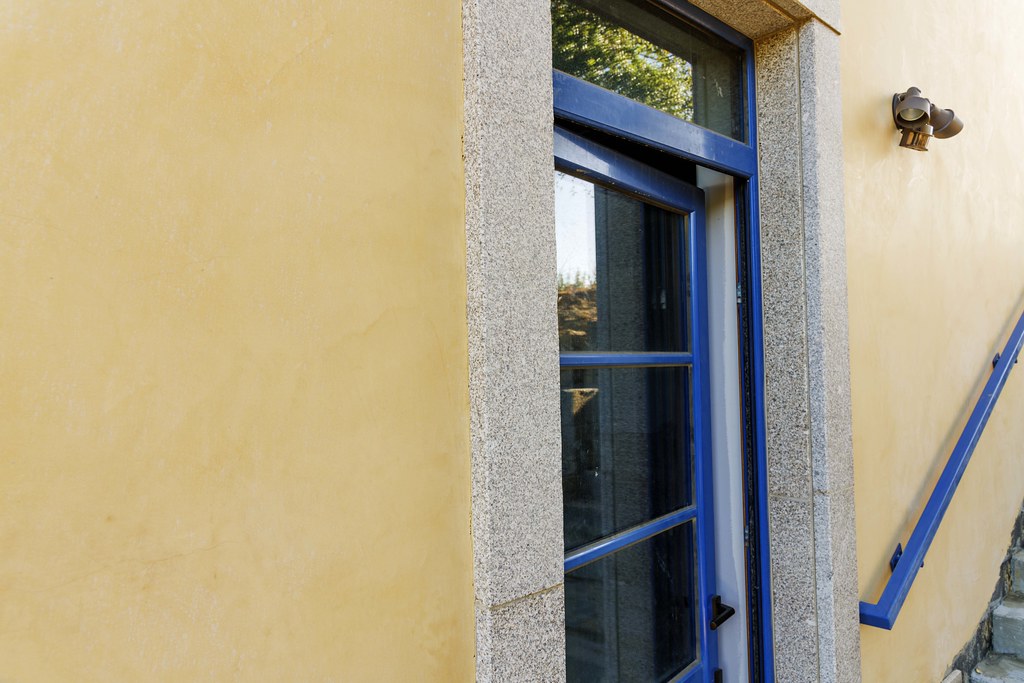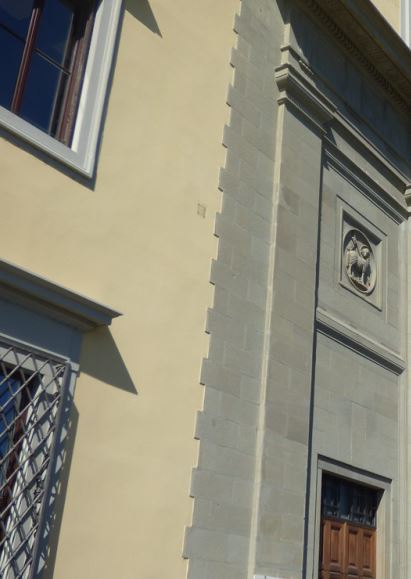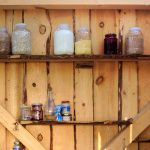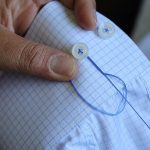
1. Prepare your wall for the application of the coating
When applying a smoothing plaster, a wall must be sound, clean and neat. If the wall has traces of humidity, it should be treated accordingly before applying the smoothing coating, or you can call a professional.
Example of an old coating that is crumbling
– Remove the plaster from the entire damaged surface, a small area or the entire wall if necessary:
– Remove it by sliding the spatula between the wall and the coating.
– Sand the support, either with a coarse abrasive paper (n° 40 or 80) or with a wall sander, making large circles.
For old plaster that does not crumble
– Scrape the support with the inclined plastering knife to eliminate the wall’s roughness as much as possible.
– If you feel any roughness when you pass your hand, sand with a coarse abrasive paper (n° 40 or 80).
In all cases
– Remove dust from the surface by scrubbing it with a brush and a cloth and vacuuming it.
2. Prepare the smoothing coating
For a powder coating
– Read the instructions carefully; the manufacturer indicates the ratio of powder to water. It is not easy to estimate the final quantity needed. Hence, it is easier to prepare small amounts and repeat the operation.
– Pour the powder into the trough. Choose a clean trough with a suitable volume; you should be able to mix easily.
– Add the appropriate amount of warm water: the water’s heat will prevent lumps from forming.
– Mix with a spatula until you have a semi-liquid cream consistency. If the coating is too dry, add a little water, and if it is too liquid, add a little powder.
Ready-to-use coating
The use of this type of coating does not require any preparation. Just open the container, and with a spatula, you can apply it to the wall.
3. Prepare your coating knife
Before applying the coating, make sure your coating knife is adequately sharpened:
– Use a fine file to bevel the edge of the blade:
– Place your coating knife on a wooden block.
– Hold the knife firmly.
– File one side of the blade to a bevel.
– Then run a sharpening stone over this bevel, always from top to bottom, until you have a sharp blade.
4. Apply plaster to the wall

Apply the plaster with a float or a plastering knife.
– Start at the corner of the wall.
– Work from top to bottom in small areas of about 50 cm on each side.
– Smoothing is done in parallel strips that overlap each other by half a blade.
– Load the plaster on the bevelled side of the knife with the spatula.
– Hold the knife full-handed, thumb underneath, and slightly at an angle so that a small bead of filler emerges on the uncoated side. It will be removed when the next strip is applied.
– Smoothen the application, passing several times over the same area.
– Apply the coating to a thickness of about 1 mm, to avoid excessive sanding.
– Let dry for at least 12 hours.
5. Apply the coating on a projecting corner of the wall
For a projecting corner with a sharp edge
Proceed in two steps:
– Provide yourself with 2 coating knives: one will serve as a guide for the other.
– Hold the guide knife horizontally along the corner so that it forms a border for the plaster.
– Apply the plaster with the other knife on the other side of the wall.
– Let the plaster dry.
– Repeat on the other side of the corner.
– Let dry.
– Sand with light sandpaper (#600 or 800) to smooth the corner.
If the corner is too fragile
It is advisable to protect it with a metal angle, an aluminium or zinc profile, which the plaster will cover.
– Fix the corner profile with a bit of plaster.
– Then, apply the wall plaster using the technique described above; the angle is then embedded in the plaster.
– Sand with light sandpaper (#600 or 800) to smooth the corner.
6. Finishing touches
– Lightly sand the plaster with a sanding block and sandpaper (#600 or #800) to achieve a smooth surface.
– Proceed with increasing circular motions.
– Finally, dust with a damp cloth.
Wait about 24 hours before painting the wall or applying a wall covering.
That’s it. You are now done with applying a smoothing plaster on your wall. Please, remember to share your comments in the section below.











